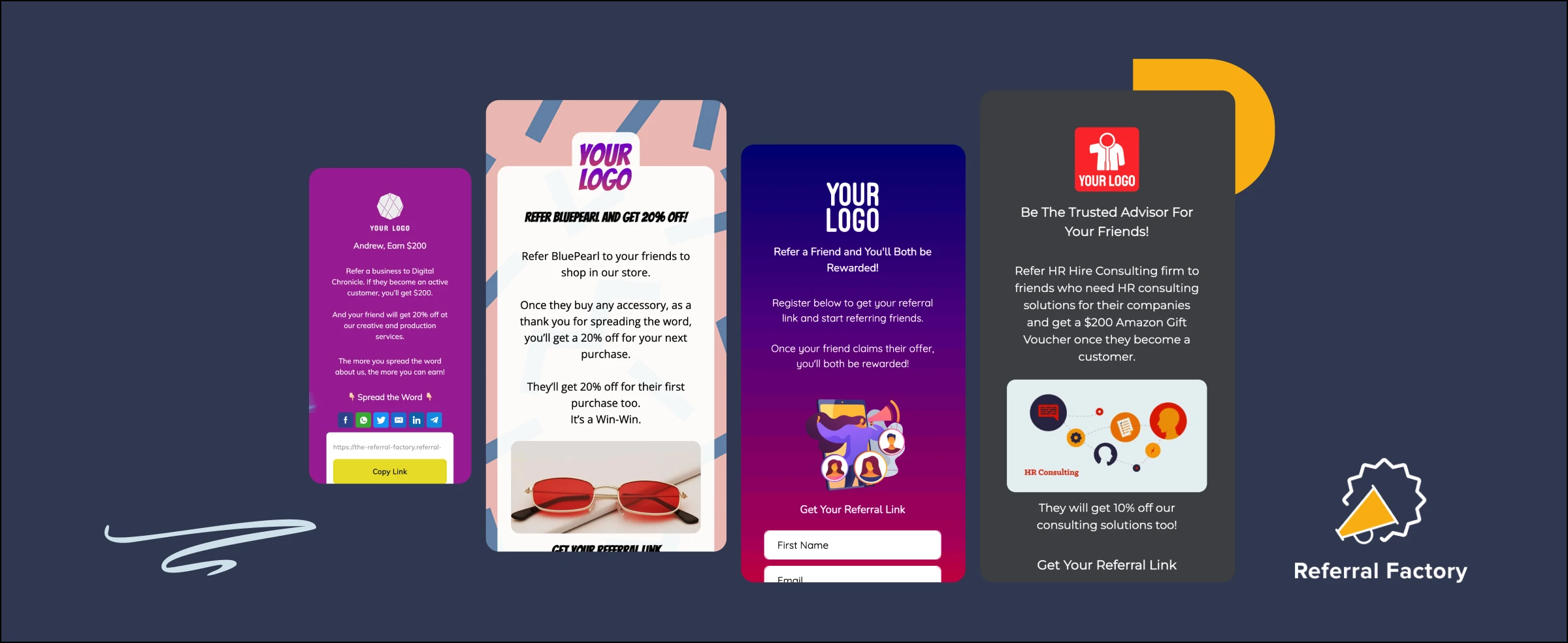Create Your Own Affiliate Program (Without Breaking the Bank!)
Let’s face it: these days, everyone’s talking about going viral, blowing up on social media, and becoming the next big influencer. And you have no choice but to chase that. The landscape dictates what to do, and trends don’t make it easier. However, there is one effective way to get to your desired metrics without breaking the bank – affiliate marketing programs.
What if, instead of chasing followers, you could create an affiliate program (AKA build a network of allies who help you spread the word about your business)? It will certainly cost you less! And, to keep your costs down even further, we spill the beans on how you can use no-code referral program software for to seamlessly track your affiliates.
In this post, we’ll walk you through the basics of creating a successful affiliate marketing program and explain how to attract potential customers through social media platforms and beyond. Ready to dive in?
Table of Contents
What, Exactly, Is an Affiliate Program?
In short, an affiliate program is a marketing channel that allows you to attract new customers via third-party promoters who recommend your business to their networks.
Key Concepts
Affiliates or affiliate marketers are people external to your business who promote your brand for a finder’s fee or a share in the sales they generate.
Affiliate marketing is the practice of using affiliates to generate more leads for your business and/or to build your brand.
An affiliate network is an intermediary platform that connects businesses with affiliates.
To understand affiliates even better, let’s distinguish them from the different groups of people who might support your business by recommending it to their networks:
🧑💼 Customers. Your very own clients might recommend you out of affection but (unless you have a client referral program) don’t receive anything in return (except perhaps your sincere appreciation).
🧑💻 Influencers. These are celebrities or people with a large group of followers on social media. They are often used to build brand awareness and increase your presence online but can also act as affiliates for your business. They can operate in the short or long term by recommending your business on their social media.
🫅 Brand ambassadors. These are typically formally-appointed representatives of your business who work with you over the long term to build your brand. Usually, a brand ambassador aligns with the values of your business and almost becomes the “face” of your brand.
💃 Affiliates. Affiliates bring together the best of all worlds! Anyone can act as an affiliate for your business — your customers, partners, influencers, etc. — as long as they have an audience, community, or network to recommend your business to. Affiliates are normally motivated to do so because they earn a fee or commission for every lead, sale, or conversion they bring you.
How Do Affiliate Programs Work?
If you are just starting out with affiliate marketing for the first time, you need to understand the mechanics to ensure the success of your affiliate program. The best way to understand the concept is with an example and let’s start by imagining we’re in the position of the affiliate.
Here’s how it works: imagine you’re a photographer and have a popular blog that features your latest photos and details how you get the perfect shot. You are approached by a camera brand to join their affiliate program. You sign up for their affiliate program and get given an affiliate link to share on your blog that helps you promote the camera brand’s products.
If people buy something thanks to your promotion, it can be tracked via the affiliate link and you get a reward or a commission on the sale. Your audience could also do something considered a desirable action by the camera brand (like signing up for a newsletter), and you get a thank-you payment called affiliate income.
For businesses, an affiliate program is an excellent way to get new customers without spending much on ads: they just pay affiliates. For affiliates, it’s a great way to earn money from their blog, YouTube channel, or other published content. Plus, it’s an easy and affordable way to start an online business.
Example of How to Make Affiliate Marketing Work
Here’s an example of how affiliate programs work step by step:
- Idea: Imagine an online store that sells clothes decides to start affiliate marketing.
- New affiliates: The first thing they do is find affiliates who can promote their business. In this case, the affiliate marketers could be fashion bloggers with a YouTube channel, Instagram, or TikTok following. They don’t need to have many content channels or a large number of subscribers. In fact, sometimes micro-affiliates or micro-influencers are way more effective.
- Promotion: The affiliate posts content with the store’s clothes with the affiliate link in the caption.
- New customer: A follower sees the post, clicks on the link, and makes a purchase, let’s say, a dress from the store.
- Conversion: The sale of the dress is tracked back to the affiliate through their link.
- Reward: The affiliate earns money based on how many new customers they’ve managed to attract or the revenue they’ve generated. How are affiliates paid? Often, they get a commission (e.g., 10%) on the sales.
You can apply this scenario to any type of business! That’s the beauty of affiliate marketing. Both parties in the affiliate relationships benefit from it:
👉 Businesses get increased brand awareness, targeted customer acquisition, and a cost-effective marketing strategy.
👉 Affiliates receive an opportunity to earn passive income. Besides, they also get flexible working conditions and a chance to promote products they like and believe in.
Even though creating your own affiliate marketing program may seem complicated, its actually quite straightforward.
Is Affiliate Marketing Right for Your Business?
This is a common question, especially because affiliate marketing has been popularized by online shops. The good news is that any business can benefit from an affiliate marketing program, even those with longer sales cycles and no digital checkout mechanisms. You don’t need to be an online store to cash in on the benefits of an affiliate program!
If you have doubts, here are some signs your business is a perfect fit for affiliate marketing:
✅ There is content online about your industry, services, or niche online.
✅ You have an established online presence through your website or social media and create high-quality content.
✅ You’re enthusiastic about creating a community around your brand.
✅ You have a devoted customer base who consistently praise your products or services.
As you see, pretty much any business in any niche can have its own affiliate program.
How Much Does It Cost to Set Up an Affiliate Program?
The first thing you need to know about affiliate marketing is the most alluring: this approach is highly cost-effective compared to other marketing strategies. You can easily create a profitable affiliate program while spending a few hundred dollars. But how much does it actually cost to set up your own affiliate program?
The answer is – it depends. There are a few factors that will affect your expenditures:
→ The size and complexity of your affiliate program.
→ The software you use to manage affiliate and their payouts.
→ The pay affiliates get (i.e., the commission rates you offer).
→ The number of people you hire (if any) to manage your program.
Still, even if you plan to spend quite a bit on each point here, the cost won’t hurt your bank balance too much. In general, you can expect to spend anywhere from $100 to $1,000 per month on your affiliate program.
However, remember that it’s just an estimate. The actual affiliate pricing could be higher or lower, depending on the variables mentioned above.
Do you want to spend less on your affiliate marketing campaigns? Here are a few tips on how to keep your expenses low:
→ Start with simple affiliate programs and gradually make them more complex as needed.
→ Offer competitive commission rates, but don’t go overboard.
→ Manage your affiliate program yourself instead of hiring an affiliate manager.
→ Make sure you calculate the expected affiliate revenue accurately when creating an affiliate marketing strategy.
PRO TIP – opt for referral software rather than expensive affiliate-specific software. You can still track all your affiliate sales and automate payouts without the fluff. Plus you can run customer, employee, and many other kinds of referral programs from the same platform!
How to Create An Affiliate Program: 5 Easy Steps
How complicated is it to create an affiliate program? Even though it might seem overwhelming at first, setting up a new affiliate program requires only five simple steps; that’s it!
Step #1 Create an Affiliate Marketing Program Strategy

The first step is to develop a strategy for your affiliate program. Here, you should start by answering the questions like “What are your goals?”, “Who is your target audience?”, and “What types of potential affiliates are you looking for?”
It is all about understanding what goals you want to reach with this affiliate program. Once you have a good understanding of your objectives, you can start developing the specifics and look for affiliate partners.
Step #2 Decide on Affiliate Commissions
One of the most important decisions you must make is how much to pay your affiliates. Your commission rates should be competitive but also sustainable for your business. A good rule of thumb is to offer affiliate pricing that is between 5% and 10% of the sale price.
However, you can also “steal” some reward ideas even from a referral program in your industry. Discounts and gifts can sometimes be as enticing as cash. Before you start an affiliate program, make sure you know exactly what your commissions are.
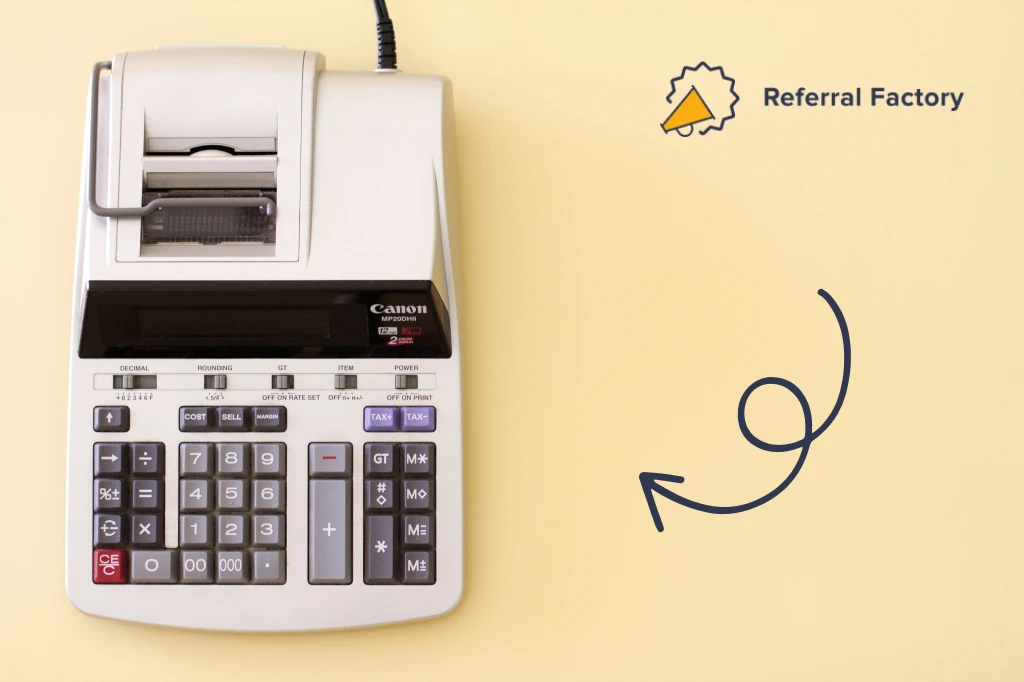
Step #3 Set up Your Tracking (and Automate Affiliate Payments)
You’ll need a way to track affiliate sales so you can pay out affiliates’ commissions and monitor your affiliate program ROI. There are a few options, but the most cost-effective is to use referral software like Referral Factory to generate referral links for each of your affiliates (also called an affiliate link).
These links help track all your affiliate sales and make it possible to fully automate the commission payment process so you can focus on your core business. Here are some of the benefits you can get with an affiliate management app:
✅ Accurate tracking
An affiliate link allows for accurate tracking of clicks, leads, and sales. Each promoter is assigned a unique affiliate link, which enables the program to credit them for the purchases or conversions made by their followers. Thus, affiliates receive proper payment for their efforts, which motivates them to continue promoting products or services.
✅ Seamless user experience
When a potential customer clicks on an affiliate link, they should be instantly directed to a special landing page. This helps build trust and credibility for both the affiliate and the business. With software like Referral Factory, you can easily build a custom and personalized landing page for each of your affiliates.
You can also build pages for your affiliates themselves, where they can sign up for their affiliate links, access special content, and track their performance. You needn’t go overboard here — what both parties will most appreciate is a smooth and simple experience.
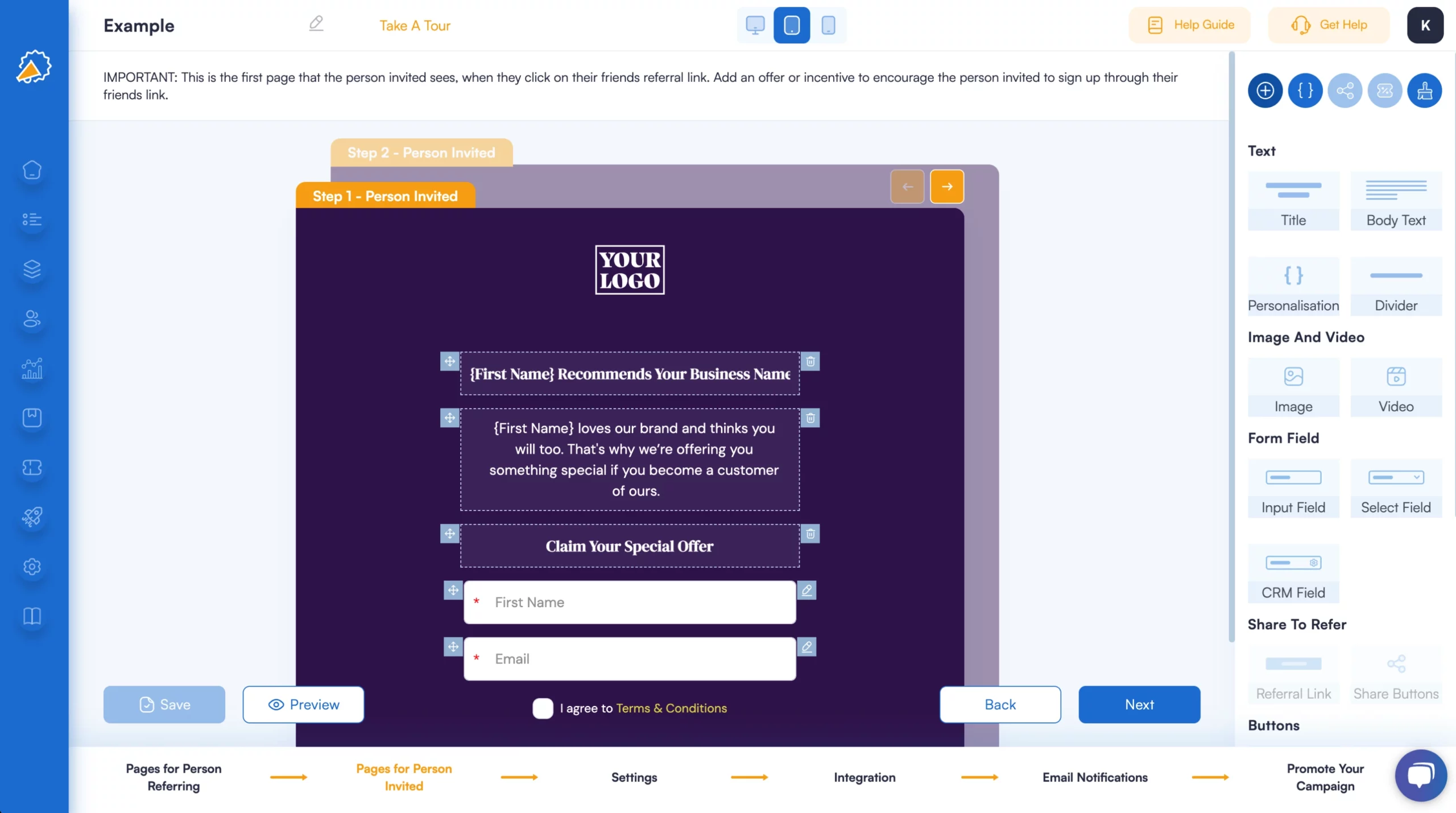
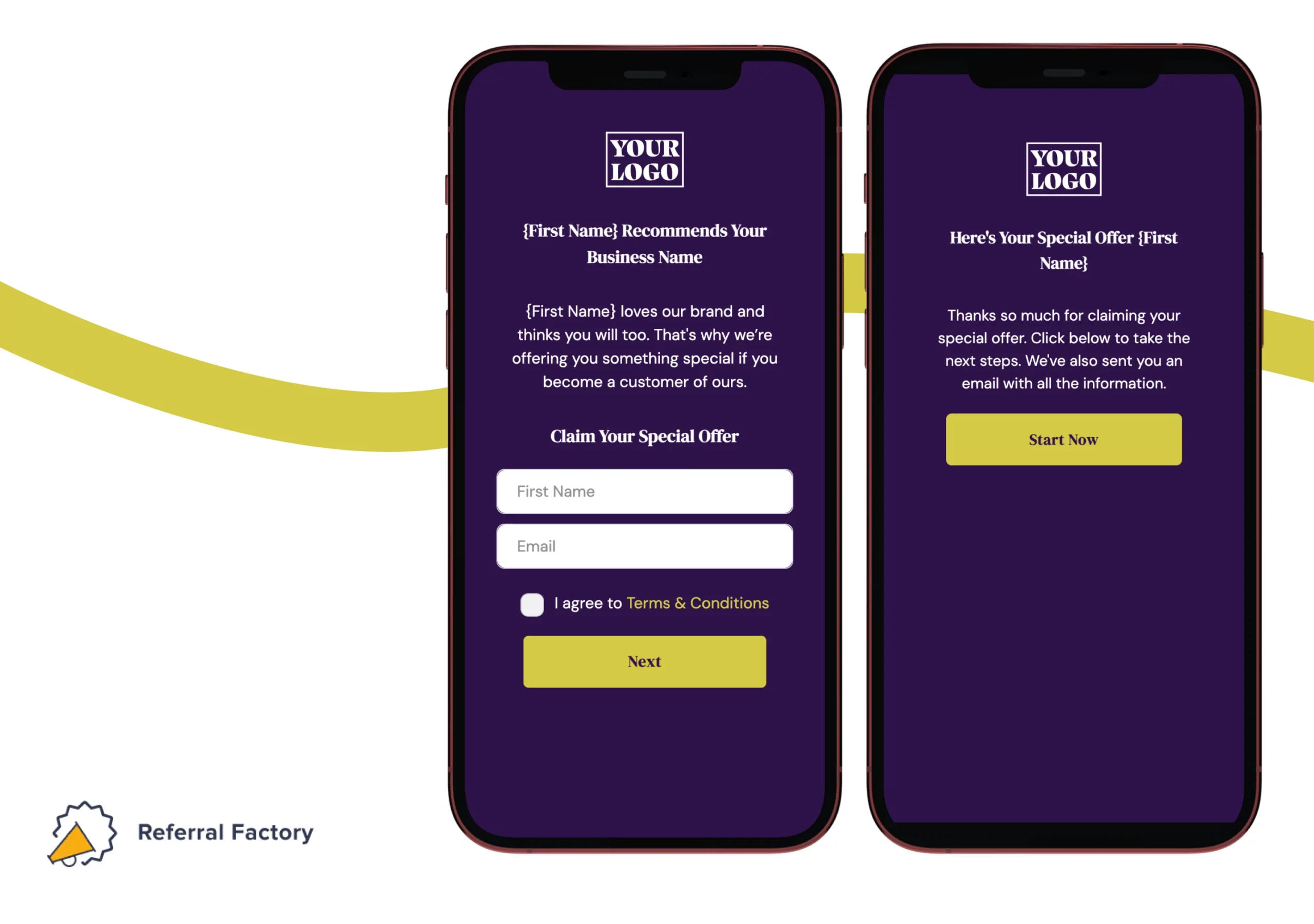
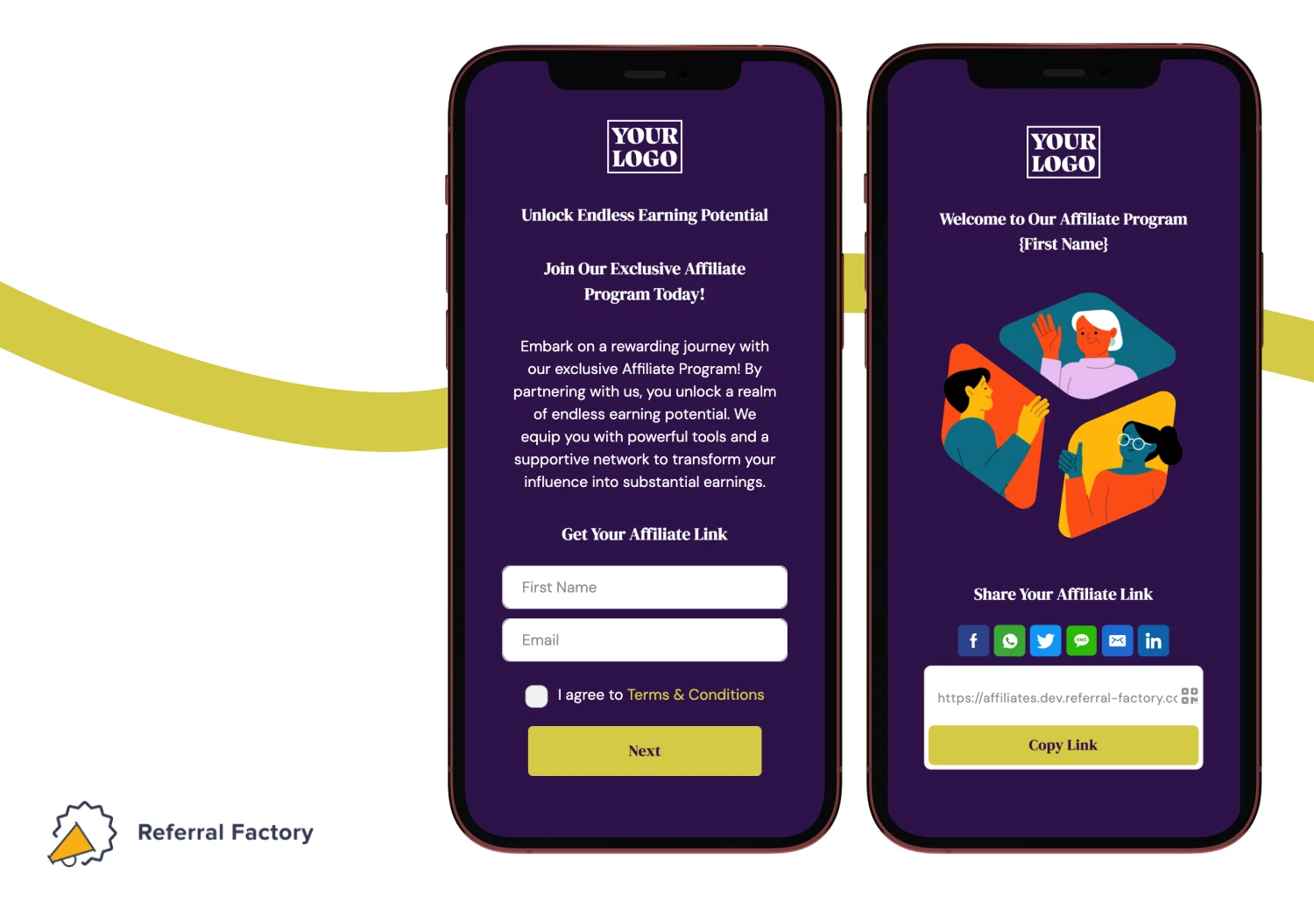
✅ Measurement and optimization
Affiliate links also enable the measurement of the affiliate program’s performance. By analyzing the data from affiliate links, businesses can determine which affiliates drive the most leads or conversions, which marketing strategies are more effective, and what optimization steps can be made to improve overall performance.
Why do you need all this? The answer is simple: a data-driven approach allows you to optimize the affiliate program for better results over time. Your best assistant in this is an effective affiliate software to track all your existing and new affiliates.
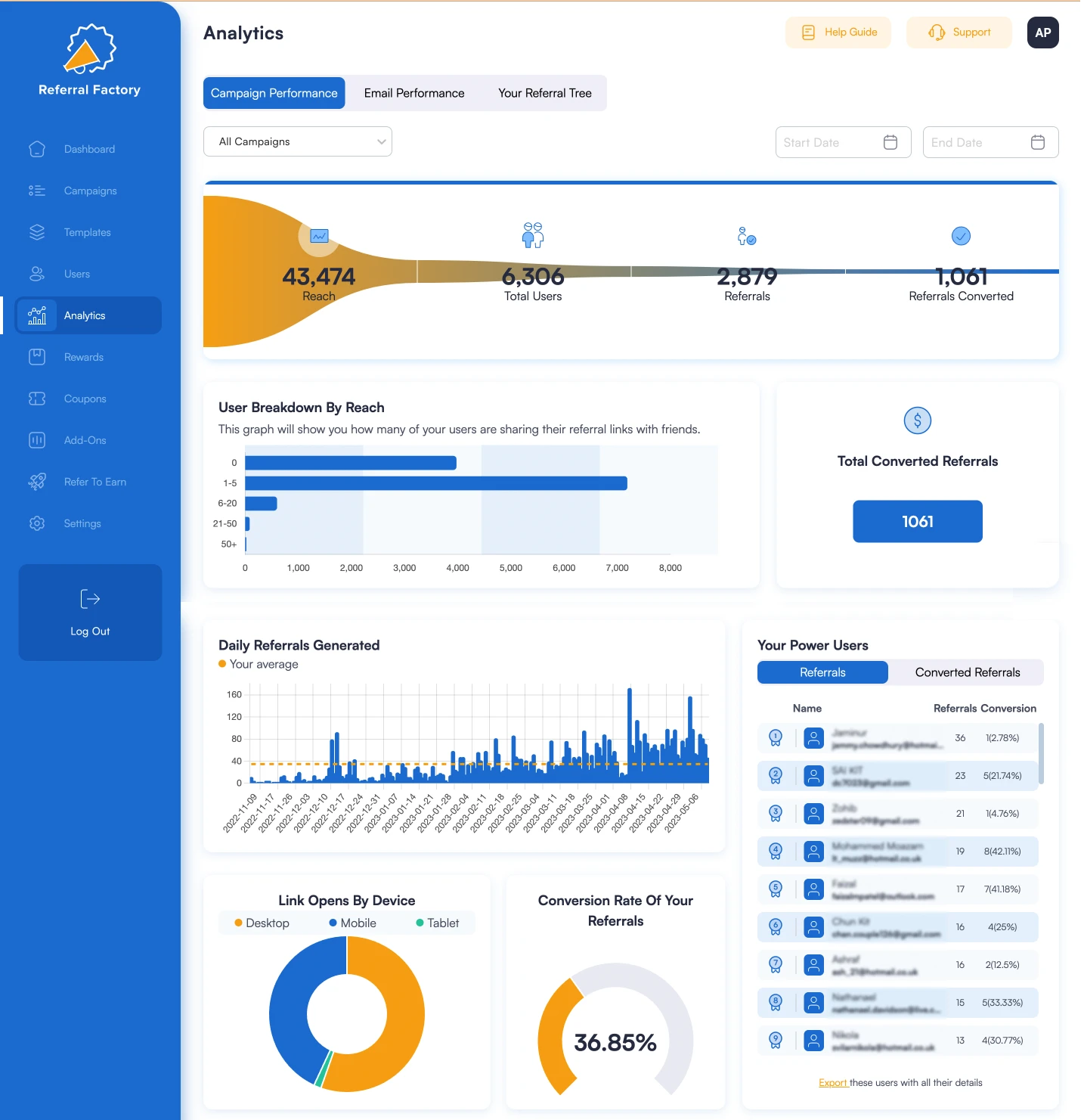
Pro Tip: Remember to connect your software to your CRM or payment gateway to automatically track conversions. Any affiliate marketer will tell you that it is a must for an effective workflow. With Referral Factory, you can hook up HubSpot, Salesforce, Zoho, Pipedrive, Monday.com, ServiceTitan, Intercom, or Stripe.
Step #4. Build an Affiliate Dashboard
How do you organize everything and get all the updates instantly? What affiliate marketers need is a user-friendly dashboard that can give them real-time insights into your campaign’s performance, including clicks, conversions, and commissions earned. At Referral Factory, we realized this necessity and created a dedicated functionality for that. And now, anyone can run a smooth and cost-efficient affiliate program in-house.
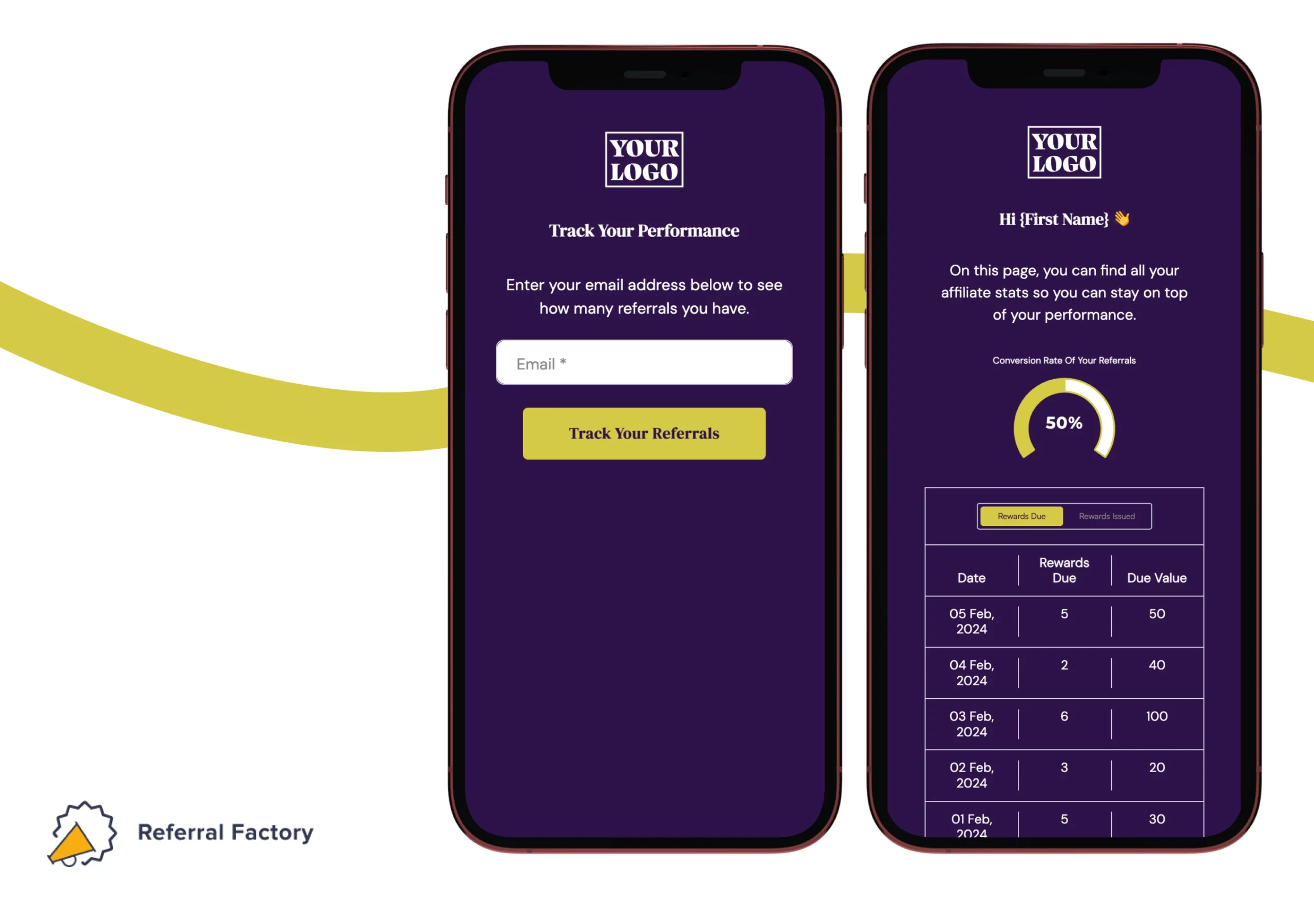
Everything you need to track the results of your affiliate link can be done in a couple of clicks. We know it’s hard to believe, but come check it yourself.
Our affiliate dashboard is called Tracking Pages. Inside any campaign (you can run as many as you wish simultaneously), you will get to share all the necessary metrics with your affiliates, such as their:
Conversion rates
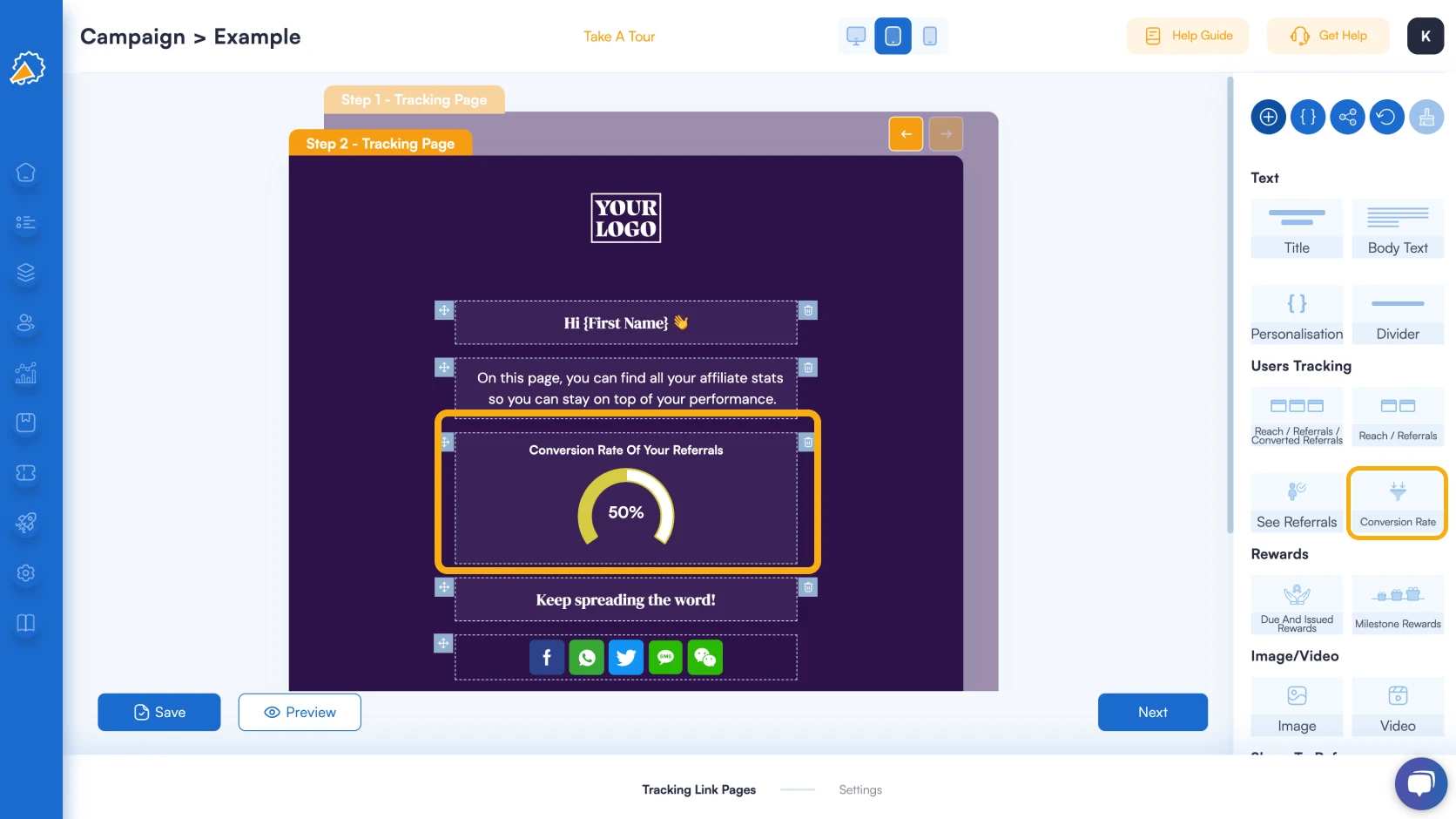
All the leads they’ve generated, and whether they converted
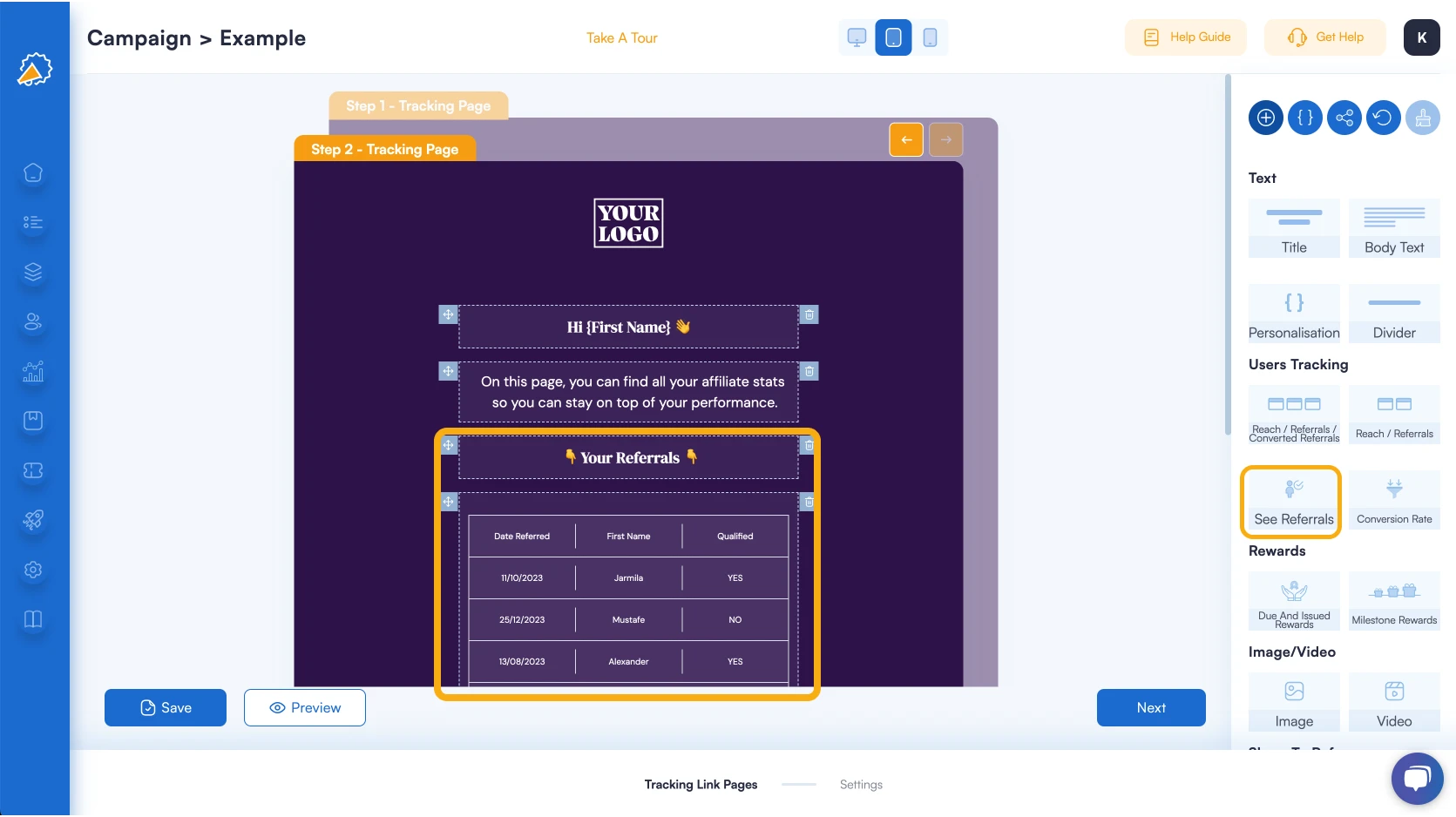
All the key metrics (reach, referrals, and converted referrals)
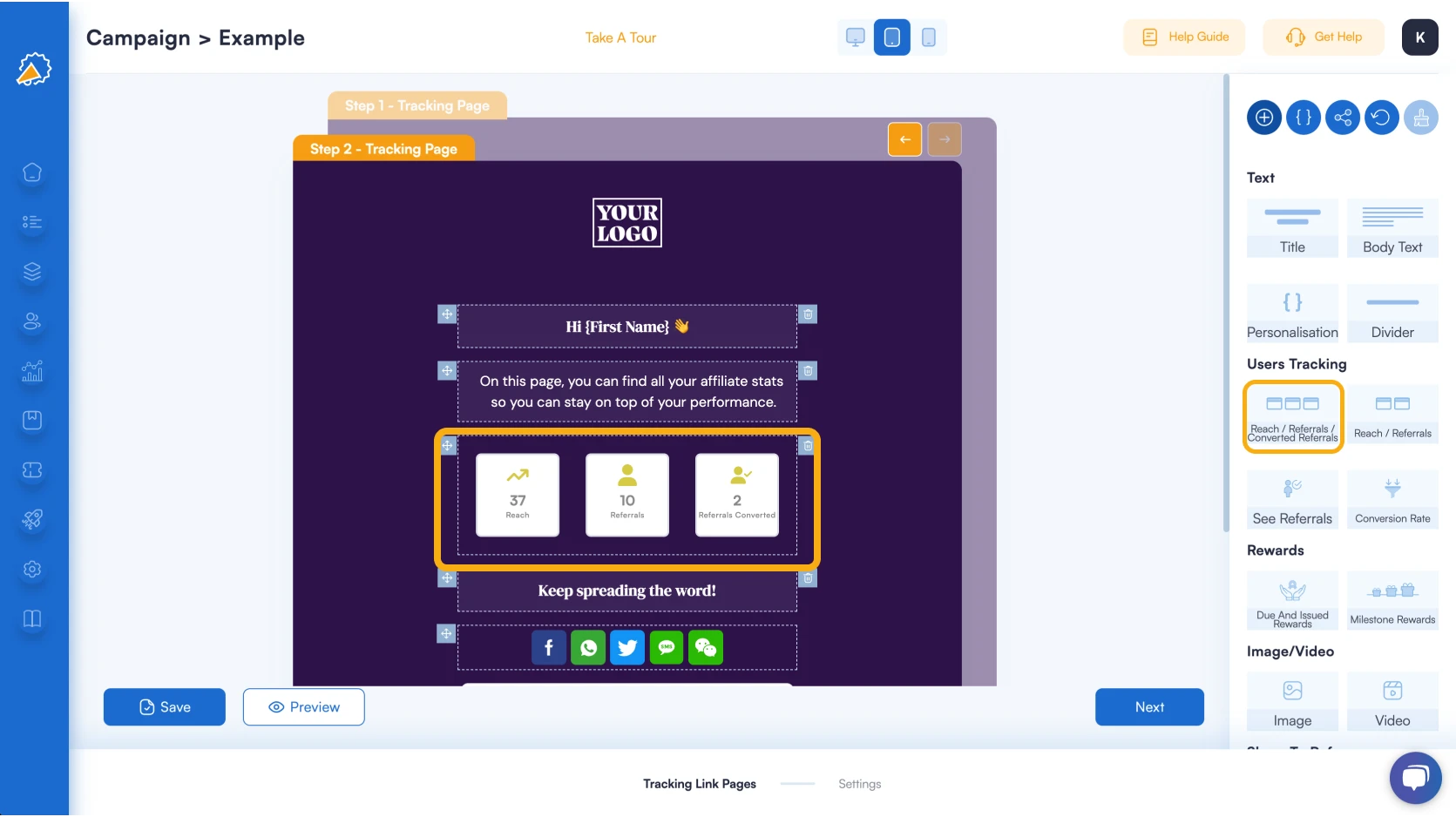
Rewards. This section allows them to see both the issued payments and their due affiliate commissions or fees.
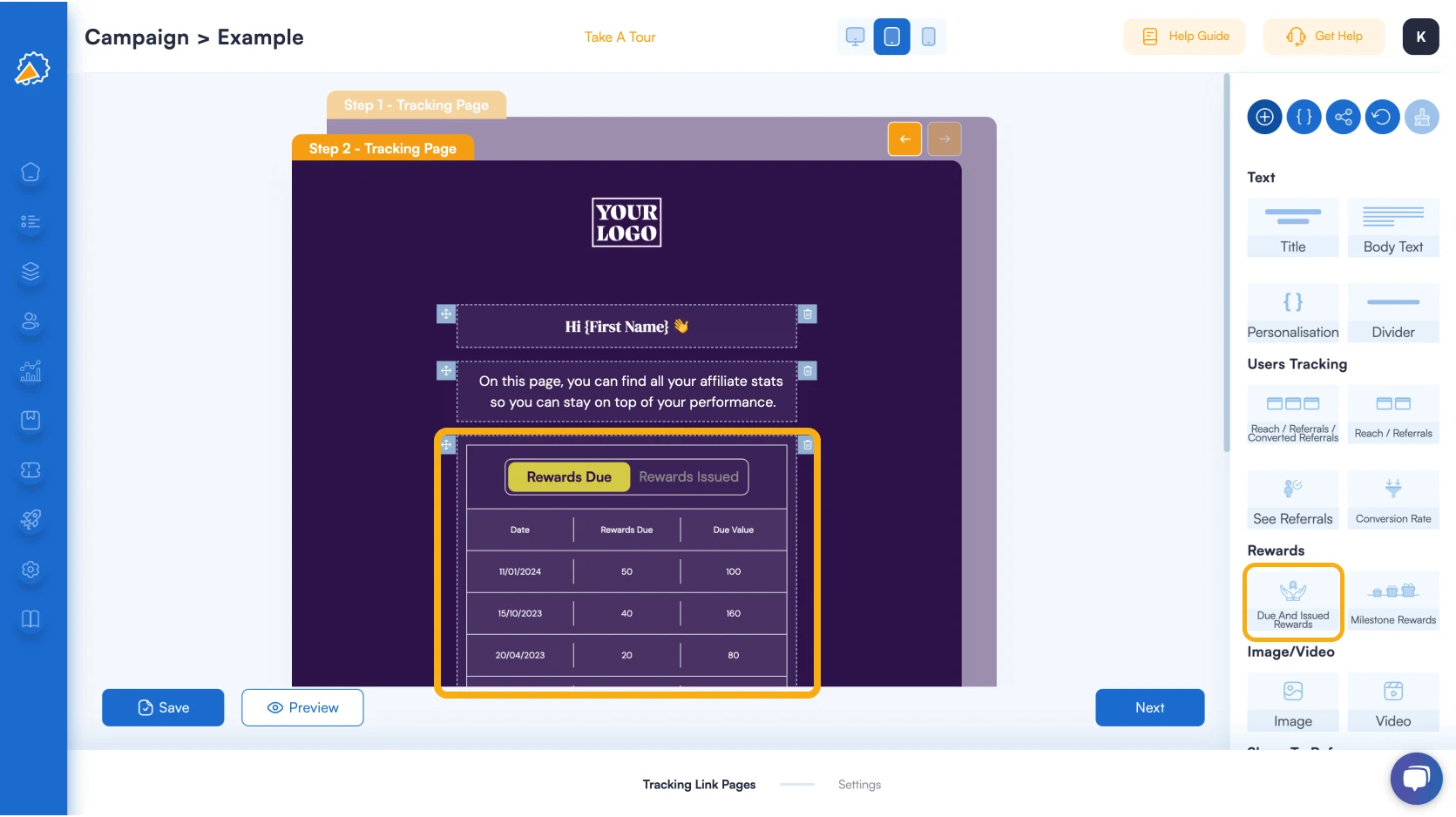
Also, they can easily track their tiered (i.e., milestone-based) affiliate payments.
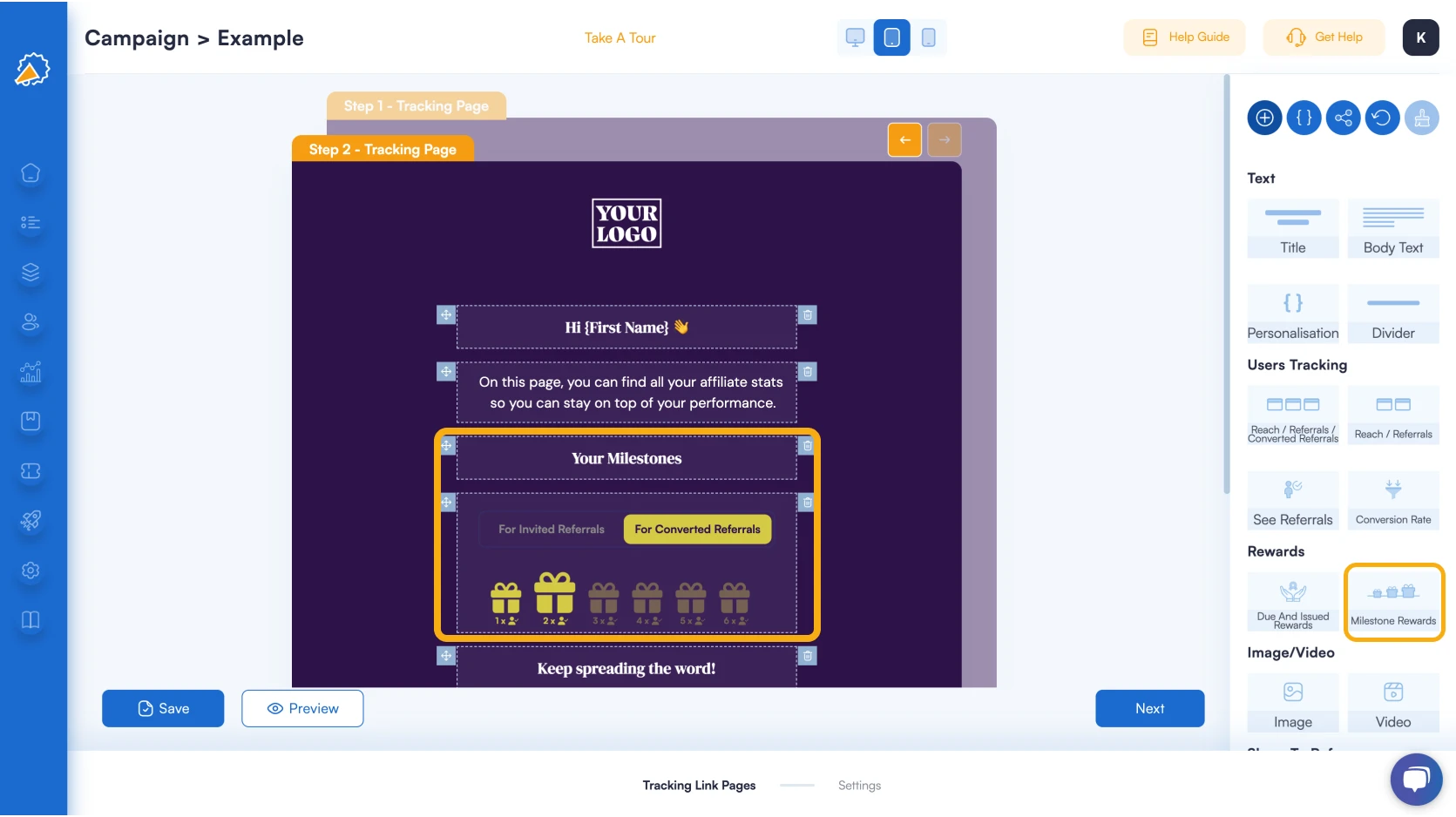
Step #5. Recruit Your Affiliate Marketers
How do you find affiliates to promote your business? There are a number of strategies to consider depending on the scope of your affiliate marketing strategy and the size of your business.
If you have the budget for it, you could consider hiring an affiliate marketing agency or working with an affiliate network to pair you up with potential affiliates. But this can be a very pricey exercise!
A free option is to list your affiliate program on the Referral Factory marketplace where thousands of potential affiliates are looking for ways to earn money. Think of this like an affiliate network without the hefty fee attached.
You could also add a “Become Our Affiliate!” page on your website. It should answer all the possible questions about the campaign rules.
If you have the time to reach out to people directly, you can find potential affiliates on social media, using keywords related to your brand. You can find them through affiliate networks, social media groups, and industry publications.
Whatever you do, look for high quality affiliates who share your brand values, have a strong audience reach, and are actively engaged in your niche. Recruiting affiliates means looking for people who can share your brand vibe.
What Makes a Successful Affiliate Program? (Best Practices)
Now that you know how affiliate programs work, let’s get you clued up on all the best affiliate marketing tips. What are the secrets of an affiliate marketing business that really works? How do you start a successful affiliate program that brings results? We’ll break it all down for you!
Quality Affiliates
Think of affiliates as your brand ambassadors. They introduce your stuff to new people through their own channels. However, not all ambassadors are created equal. Quality ones know your products inside and out and are creative in presenting them. They make interesting content that people actually want to see, and they’re always open to learning more and improving. The affiliate agreement means a lot to them.
Poor ambassadors, on the other hand, barely even mention or misrepresent what you do. They don’t bother if affiliate links fit naturally; they put out random content, not caring if it’s good or if anyone even wants to see it. And in some cases, they just don’t match your vibe at all.
So, choose your ambassadors wisely! In the end, the quality of your affiliates will determine your affiliate program success.
High KPIs
These are rather simple indicators, but nothing else will show if your affiliate marketing efforts really work. Here are some important KPIs you should be focusing on:
Click traffic (Reach). It’s a key sign of how much your program is expanding. For instance, if you’re getting more clicks than last year, it is a good sign, meaning your program is growing.
Top affiliates. Get into the routine of keeping a list of your top affiliates who bring in the most money for your program every year. It’s important to maintain good connections with them and keep those partnerships.
Conversion rate. This ratio provides insight into how effectively the clicks are turning into actual sales.
Year-over-year growth. You need a comprehensive view of your program’s performance beyond monthly sales figures.
Clear and Consistent Communication
Open and transparent communication is vital for building trust and fostering strong relationships with your affiliates. Provide them with all the necessary information: product updates, marketing materials, and performance data.
Regular communication also allows you to gather valuable feedback and address any concerns they might have. Besides, think about the tone of voice (since it is a part of communication success); you can attract more people just by the way you speak to them!
Effective Tracking Tools
You need a proper affiliate platform to make the whole campaign succeed. The rule is simple: if you are not tracking, you move blindly. Data is the lifeblood of any successful affiliate program.
You can implement Referral Factory to monitor clicks, conversions, and other vital metrics. This data empowers you to measure the effectiveness of your program, identify areas for improvement, and optimize your campaigns for maximum ROI.
4 Examples of Affiliate Programs Done Right
The best way to learn about the most effective tactics is to see them in practice. Let’s explore the examples of successful affiliate marketing programs:
Amazon
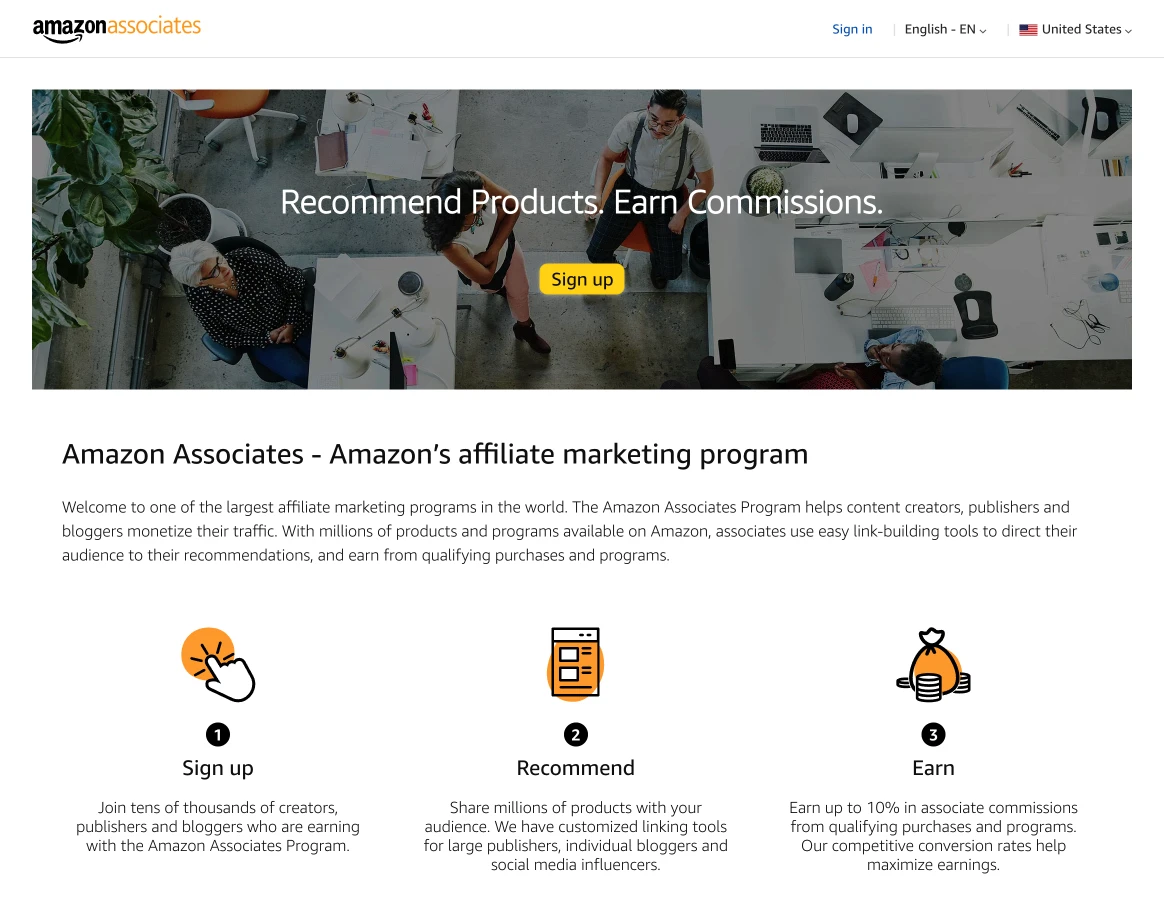
Amazon’s affiliate program, now called the Amazon Associates Program, is a well-known example of the affiliate marketing space. What can we say about it?
Firstly, with millions of Amazon products available for promotion, affiliates can choose products that align with their niche. That’s a huge advantage for Amazon as this versatility allows affiliates to stay loyal to their brand while participating in the affiliate program. What else?
- The program offers different tools for affiliates based on where they share links: big websites, individual bloggers, or social media influencers.
- Affiliates can earn commissions of up to 10%, though the actual rate varies depending on the product category.
- When a customer follows the link and adds the promoted product to their cart, the affiliate earns a commission on the entire cart, not just the specific product.
Additionally, Amazon offers a companion program called Amazon Influencer for content creators with higher profiles. This program includes similar benefits, along with a personalized Amazon page featuring a unique URL. Despite the name, this program is essentially an extended version of Amazon’s affiliate program.
Shopify

Shopify has a pretty extensive affiliate network. And it’s no wonder! Affiliate marketing strategies work well for such companies, especially if they are open enough for many creators to join the program. Shopify invites developers, course creators, website owners, community admins, and influencers to join their affiliate program (that’s a lot of creators!).
It’s an attractive choice for affiliates due to a high commission rate, priority support, free exclusive content, lead magnets for sales, and a quality product. Key program details include a 100% commission on initial subscription fees, a 30-day cookie life, and flexible payment terms.
Moosend
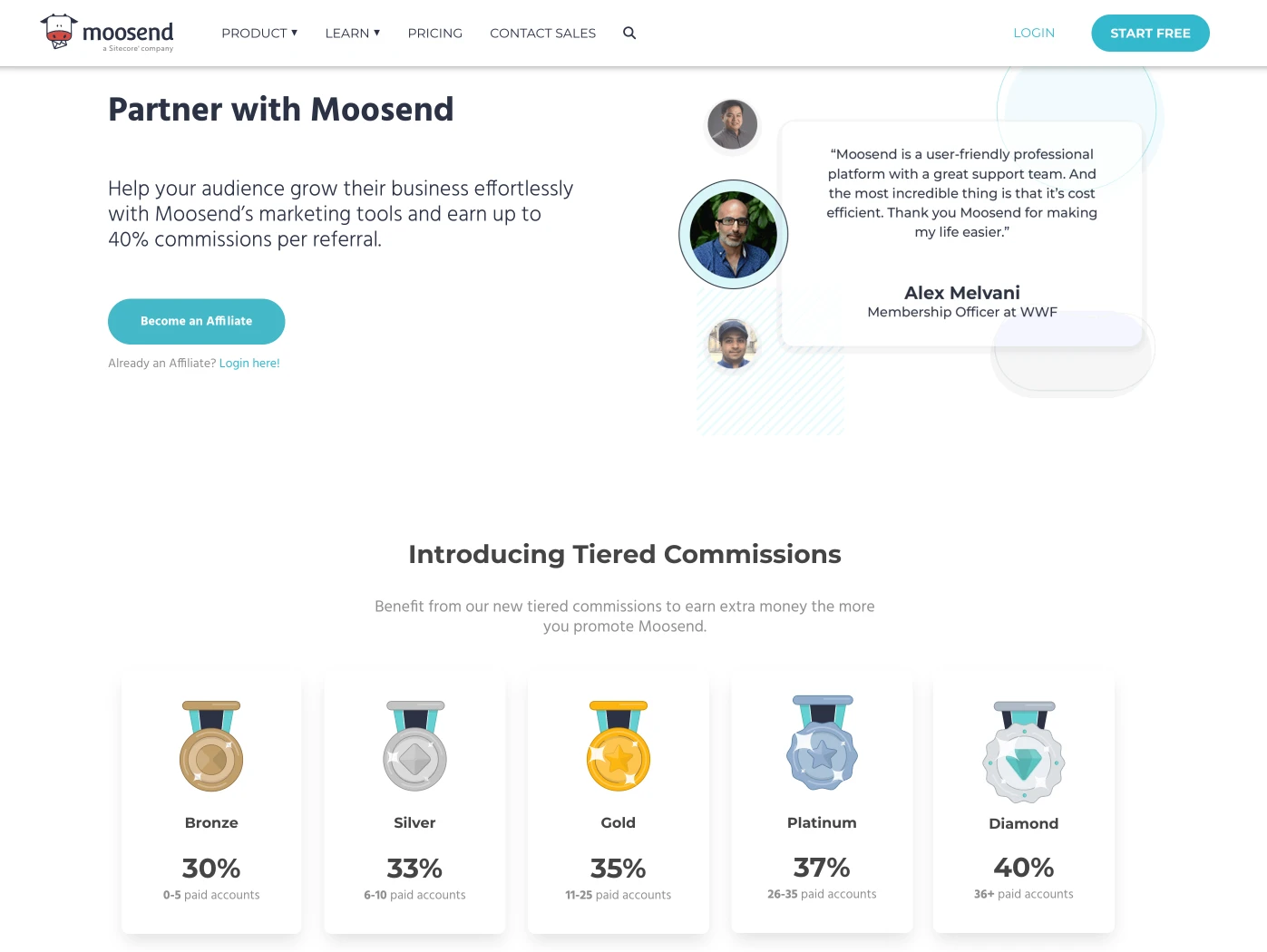
Moosend, a popular email marketing platform, caters to almost any business, from small startups to Fortune 500 companies. What makes Moosend’s affiliate support remarkable is the dedicated account support via live chat and a resource library with banners, videos, guides, and pre-written emails.
Commissions can be claimed with a $5 threshold and approved within 20 days of the following month. But! There are more interesting things you may want to consider for your affiliate marketing. For example, Moonsend offers tiered commissions:
30% for 0-5 paid accounts
33% for 6-10 paid accounts
35% for 11-25 paid accounts
37% for 26-35 paid accounts
40% for 36+ paid accounts
eBay
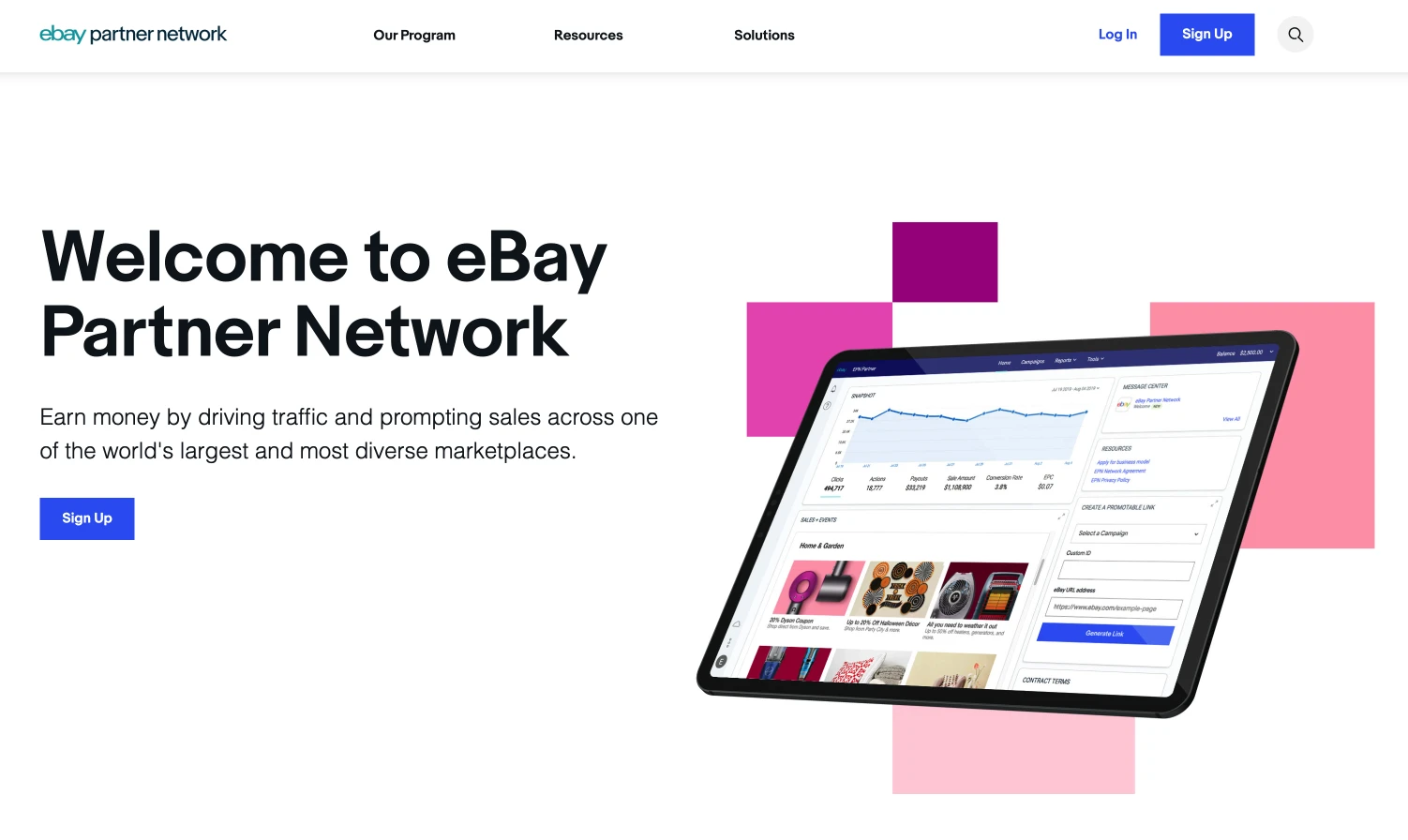
eBay is a big player in the affiliate market. It is a well-known brand with high conversion rates and a vast array of products, with over one billion listings across various categories.
eBay Partner Network provides a commission ranging from 1% to 4%, which is determined by the product category and a percentage of eBay’s revenue from the purchase. High-value items, such as those in Parts & Accessories or Fashion, offer the potential for higher earnings. However, the program has a downside: it imposes a cap for each category, mostly below $1,000, limiting your potential earnings.
Best Affiliate Software Solutions
So, what is the best software for different types of affiliates? Let’s look at the best affiliate marketing tools that can help you track and invite affiliates and almost serve you as an affiliate site.
Referral Factory
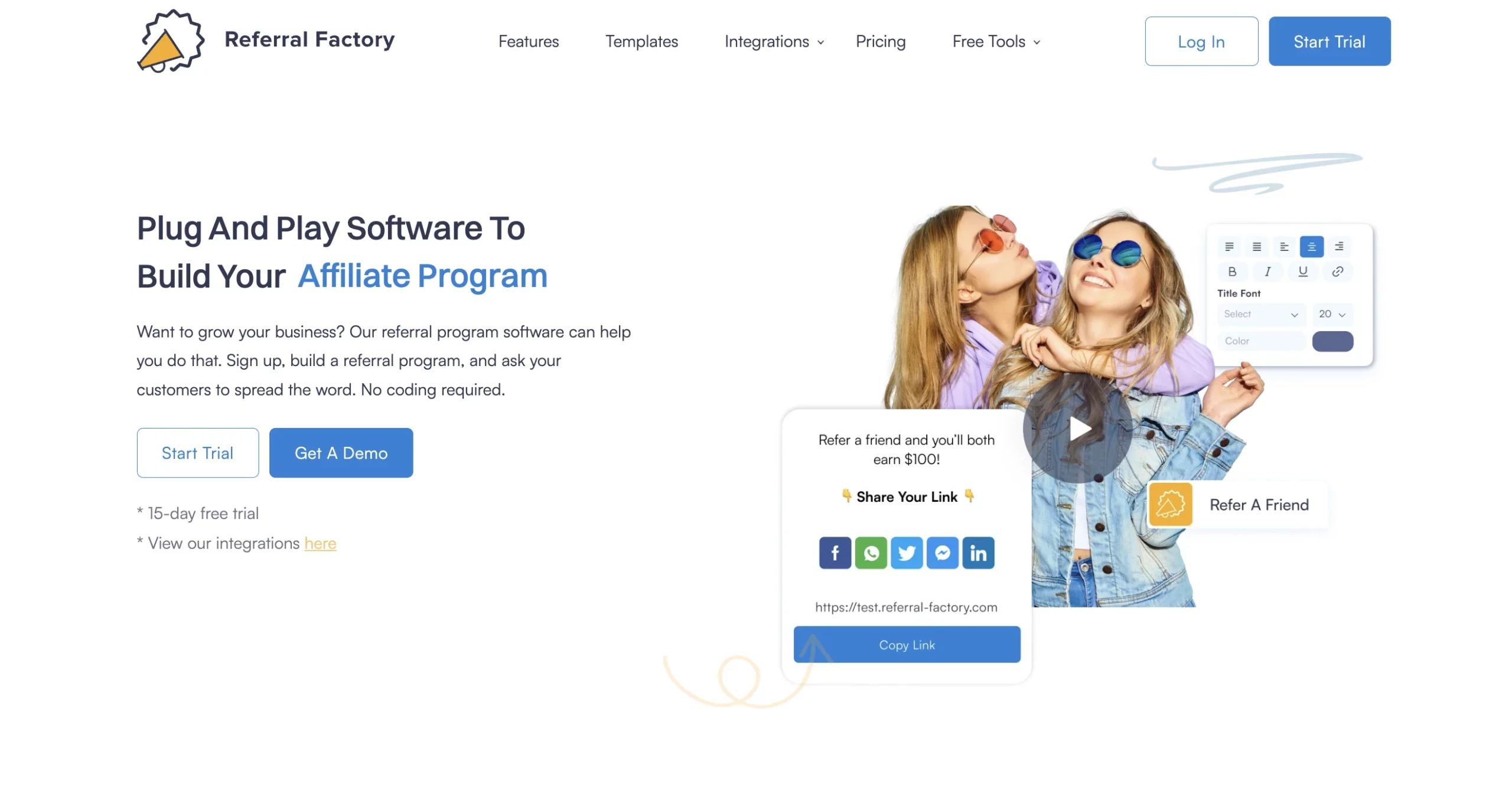
💰 Price: the basic plans start from only $95.
Referral Factory has one of the most understandable interfaces, and it offers all the functionality you might need, which helps measure the success of your affiliate programs. It is a highly cost-effective solution that provides one giant benefit: apart from your affiliates, you can also manage different types of referral programs. Besides, there is no commission on sales generated via your affiliates. Referral Factory can become your best affiliate platform that helps you work effectively with your affiliate networks no matter the size of your business or your industry. It works for e-commerce and longer sales cycles.
Referral Factory offers diverse pricing tiers based on your business needs but integrations, rewards, templates, and fraud alerts are included in all subscriptions. You should upgrade to higher tiers for advanced customization features like white-labeled pages, webhooks, API access, custom domains, or enterprise-level security features. But even a basic plan ($95/ month) is a comprehensive solution for any business looking to run an affiliate program.
PartnerStack
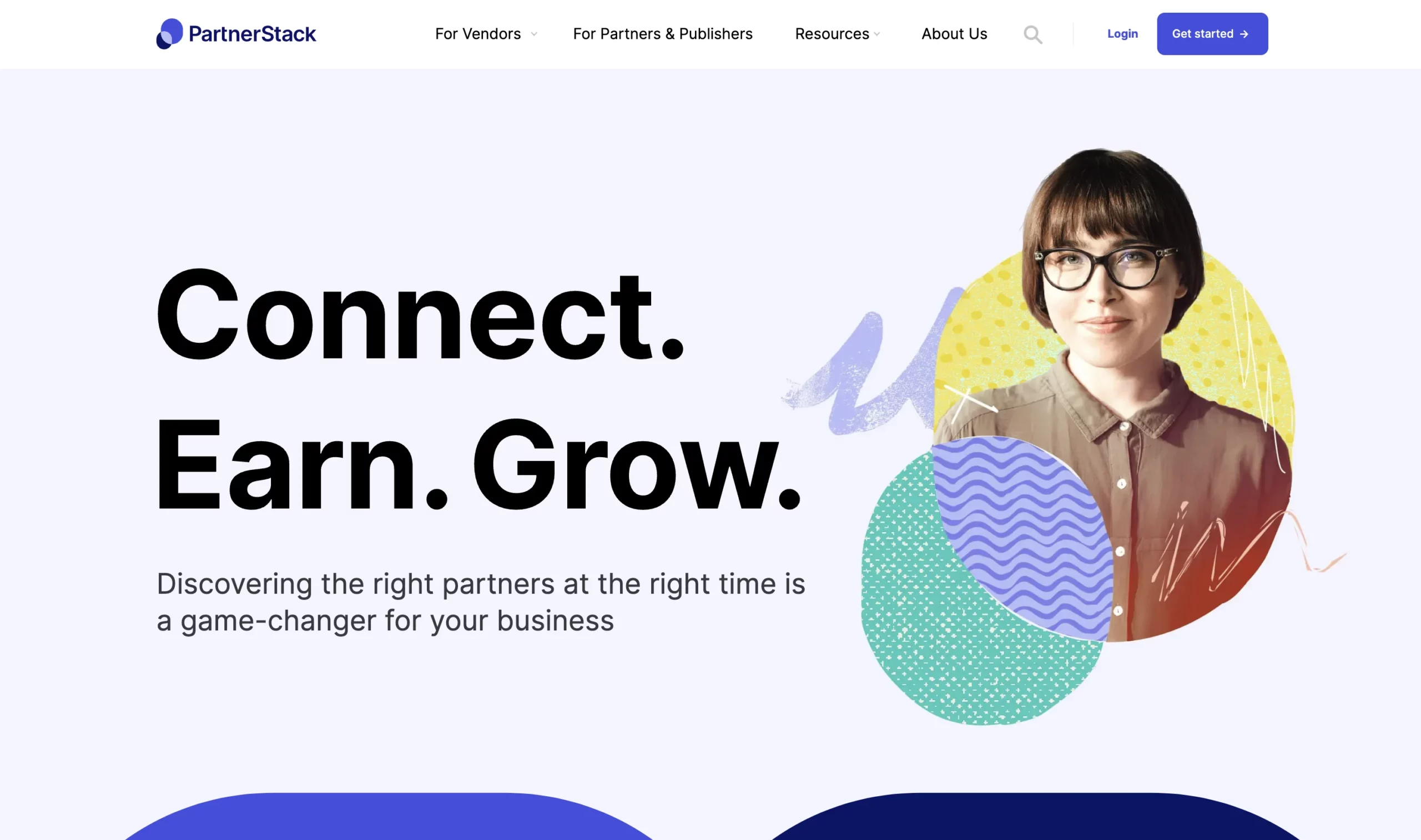
💰 Price: starts at $500 a month for the basic plan.
PartnerStack stands out as a popular affiliate management software due to its extensive set of features. It allows you to organize your affiliates into groups and work with marketing channels more efficiently. You can provide unique rewards and content to each segment. This feature is particularly useful because it enables you to apply different affiliate commission structures.
Any dedicated affiliate manager will find that the software handles payouts efficiently, saving you from manually tracking payments. It automates the payout process, ensuring commissions are paid as scheduled and in compliance with global regulations. Online businesses can benefit a lot from it.
This affiliate management tool is quite expensive. However, several affiliate marketers consider it valuable. PartnerStack offers three plans: Essentials, Growth, and Enterprise, and the cost starts at $500 a month for the most basic plan.
Upfluence
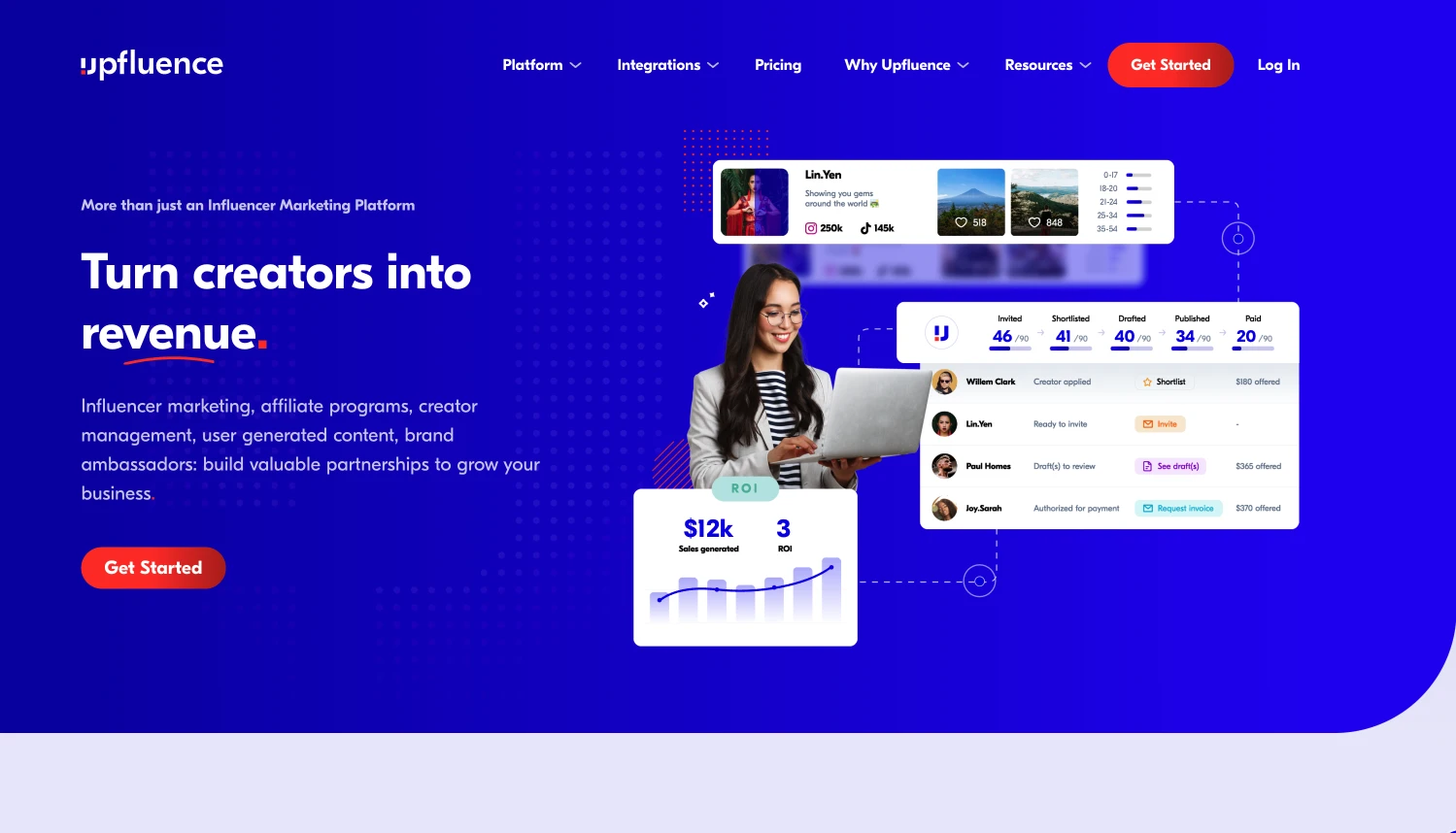
💰 Price: On request
Upfluence is an affiliate website for all your brand’s operations, from identifying potential affiliates to attracting new ones. This user-friendly and robust system enhances sales efficiency while reducing your workload.
You can monitor the revenue generated by each affiliate with accurate sales attribution through individual links, order tracking, and commission calculations. The Stream tool allows you to oversee campaign performance and meticulously calculate your affiliate program’s ROI.
Many users consider this tool an expensive one. To learn the actual price, you must talk to the Upfluence managers after choosing a plan.
Conclusion
Affiliate marketing works – this is the bottom line for many businesses. Once you set up your goals and budget and find a powerful tracking tool, you can expect better results for your affiliate efforts. When you first start an affiliate program, it seems way too challenging. But it all gets much easier with practice. Follow our tips and best practices, and your affiliate program will be a success.




